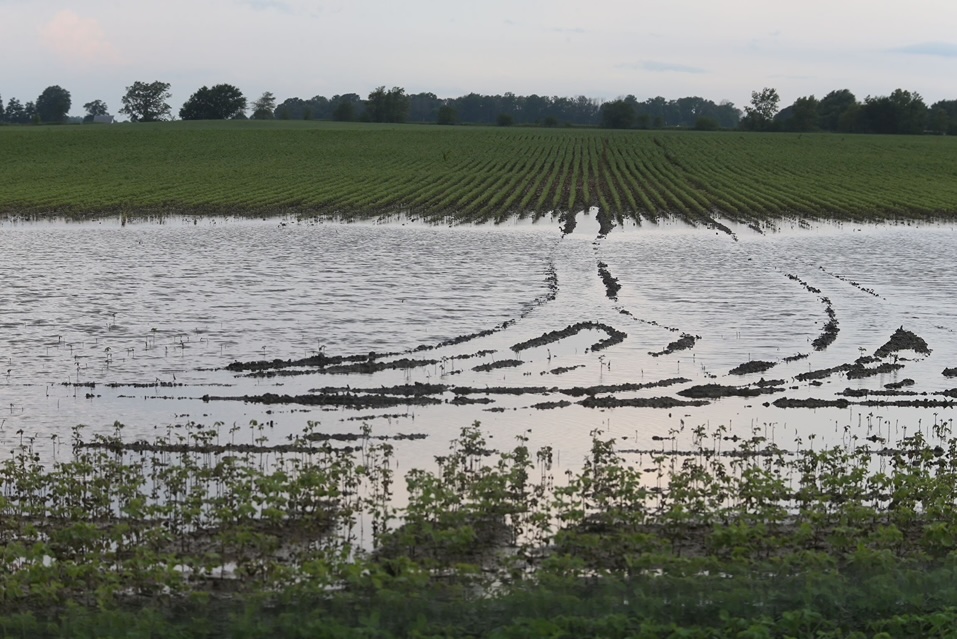Six Tips for Farming Flooded Fields

Undoubtedly, some farmers will experience a wet spring every year. So, once flood waters recede, and the sun finally gets a chance to warm the ground, what can farmers do to maximize their soybean crop’s potential?
-
- Flooded fields. Be sure to sample soil in fields flooded by moving water, which may have impacted soil composition and depth in certain areas. What’s left behind may dictate how you proceed. “Remember that even differing field textures can foul up planting,” says John Wilson, University of Nebraska extension educator. “Be prepared to adjust plans accordingly.”
- Keep it clean. Proper equipment setup represents a key element of effective row residue removal. Remember to keep all mechanisms clean and regularly adjust settings. “Field debris can really clog up the works, literally and figuratively. If it’s not working properly, even the best equipment isn’t worth much,” cautions University of Wisconsin Agronomy Professor and State Soybean Specialist Shawn Conley, Ph.D.
- Slug alert. Many pests flourish in damp soil, including slugs. To discourage them from settling into fields, be sure to diligently remove residue from over rows. Not only will added sun exposure slow slug movement, it also will speed up plant growth. “This will help the plants get out of the ground and actually outgrow potential hazards, including slugs,” says Conley.
- Planting depth. Conley advises farmers not to plant beans too deeply, citing between 1 inch and 1 ¼ inches as the optimum depth. This helps seedlings emerge more quickly, limiting the time they are subject to pathogens that flourish in saturated soil.
- Check genetics. Genetics may dictate a specific seed variety’s vulnerability if planted into an environment conducive to disease. So, consider planting later rather than earlier, depending on how your seed will handle existing field conditions.
- Seed treatment. Because this year’s prolonged wet soil conditions will invite fungal development, Conley and Wilson advise using systemic fungicides. “This spring, you don’t want to tackle planting without a seed treatment appropriate for the type of soil you have,” says Conley.



